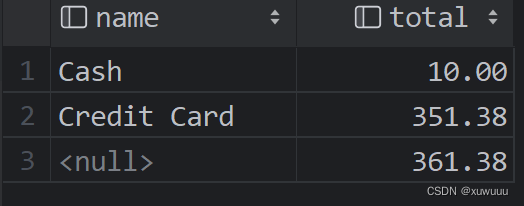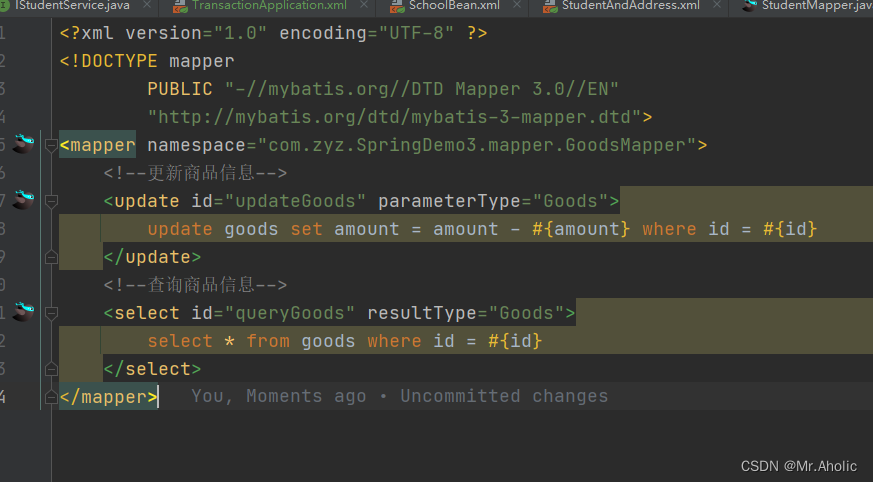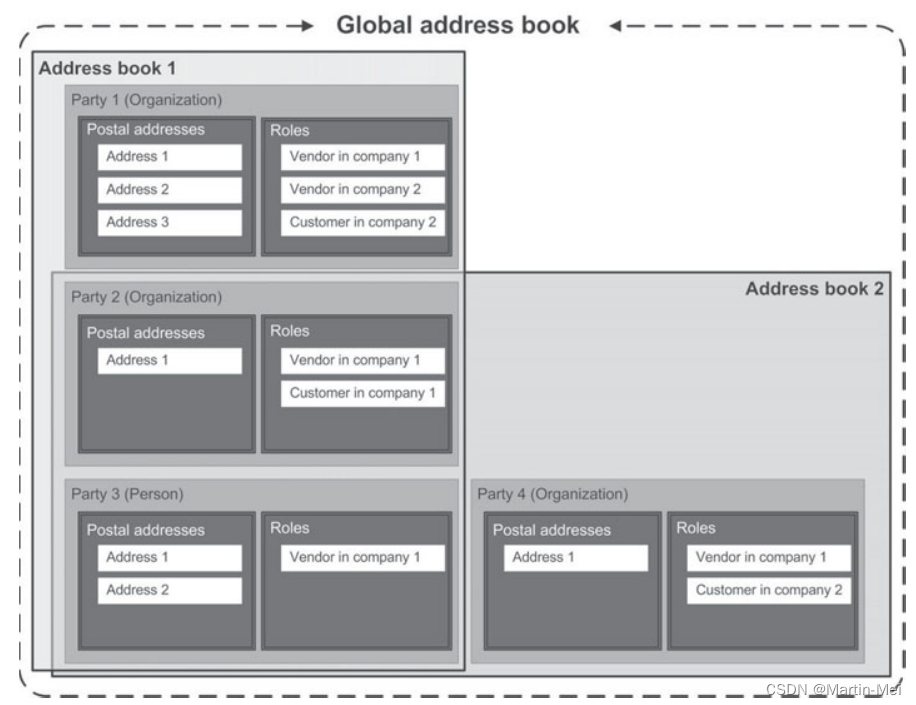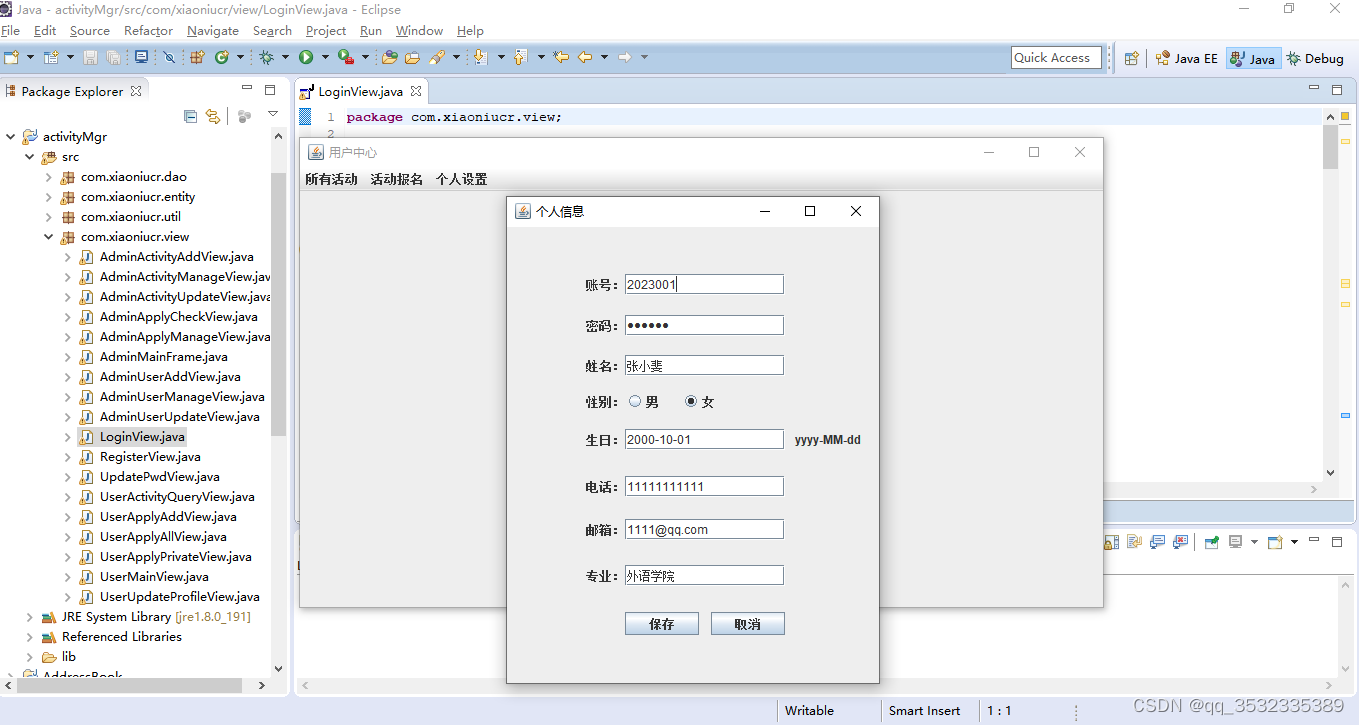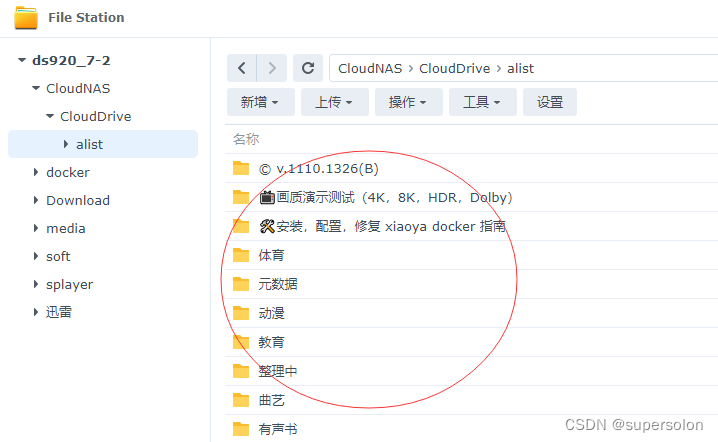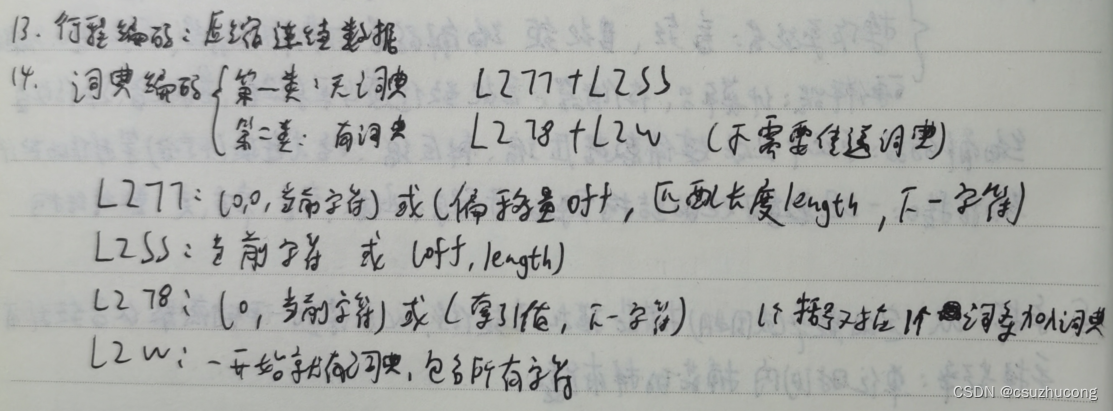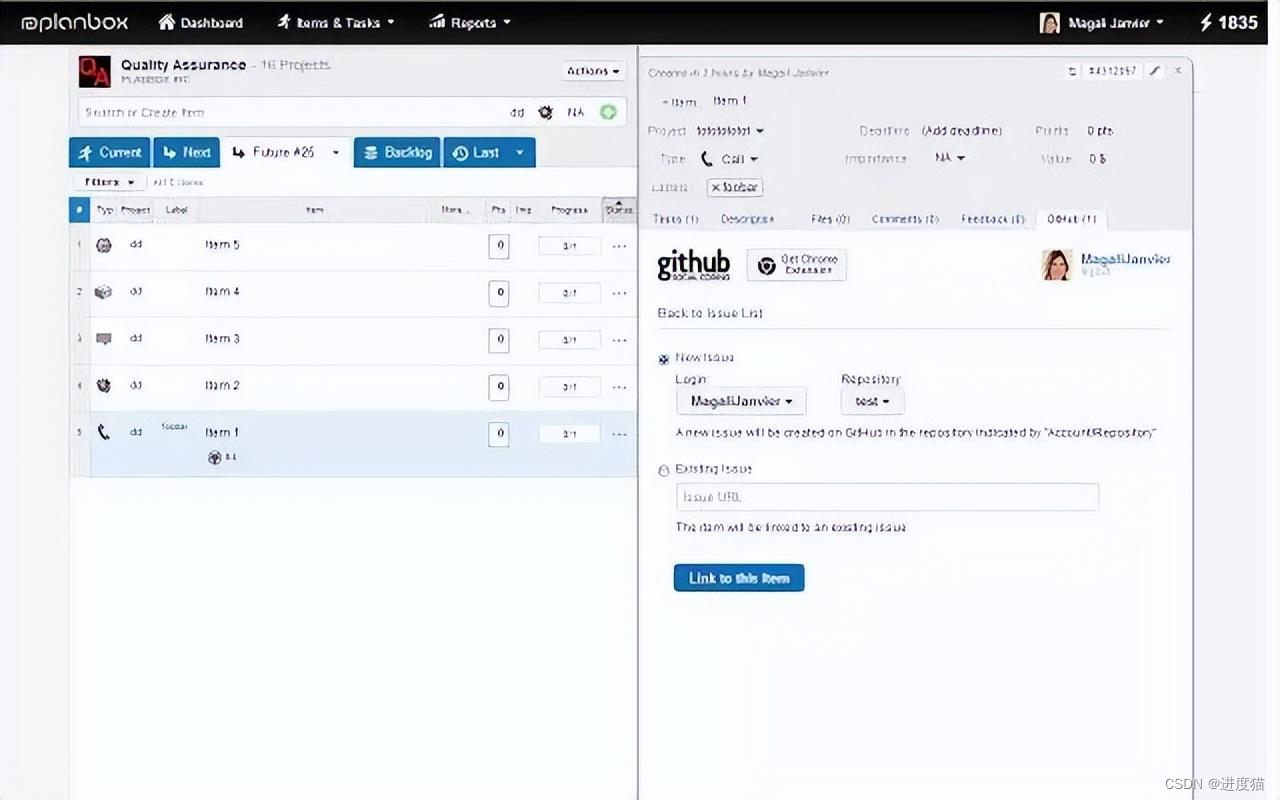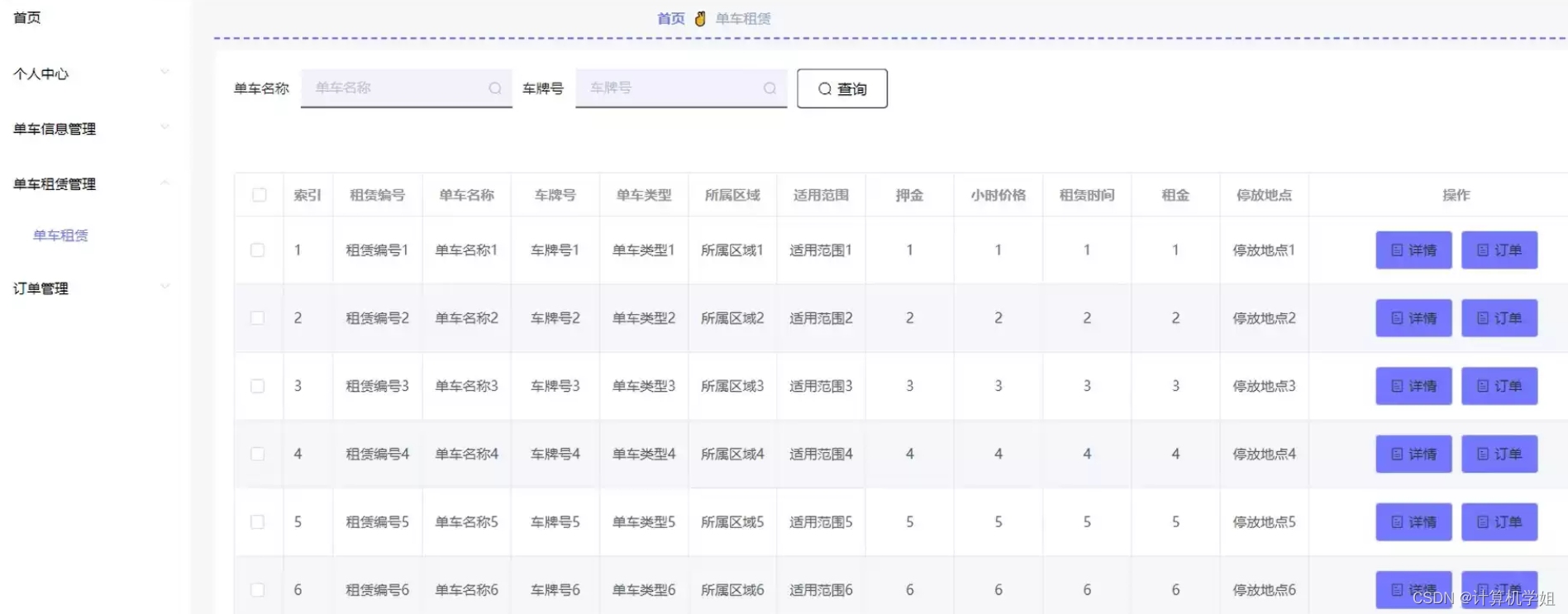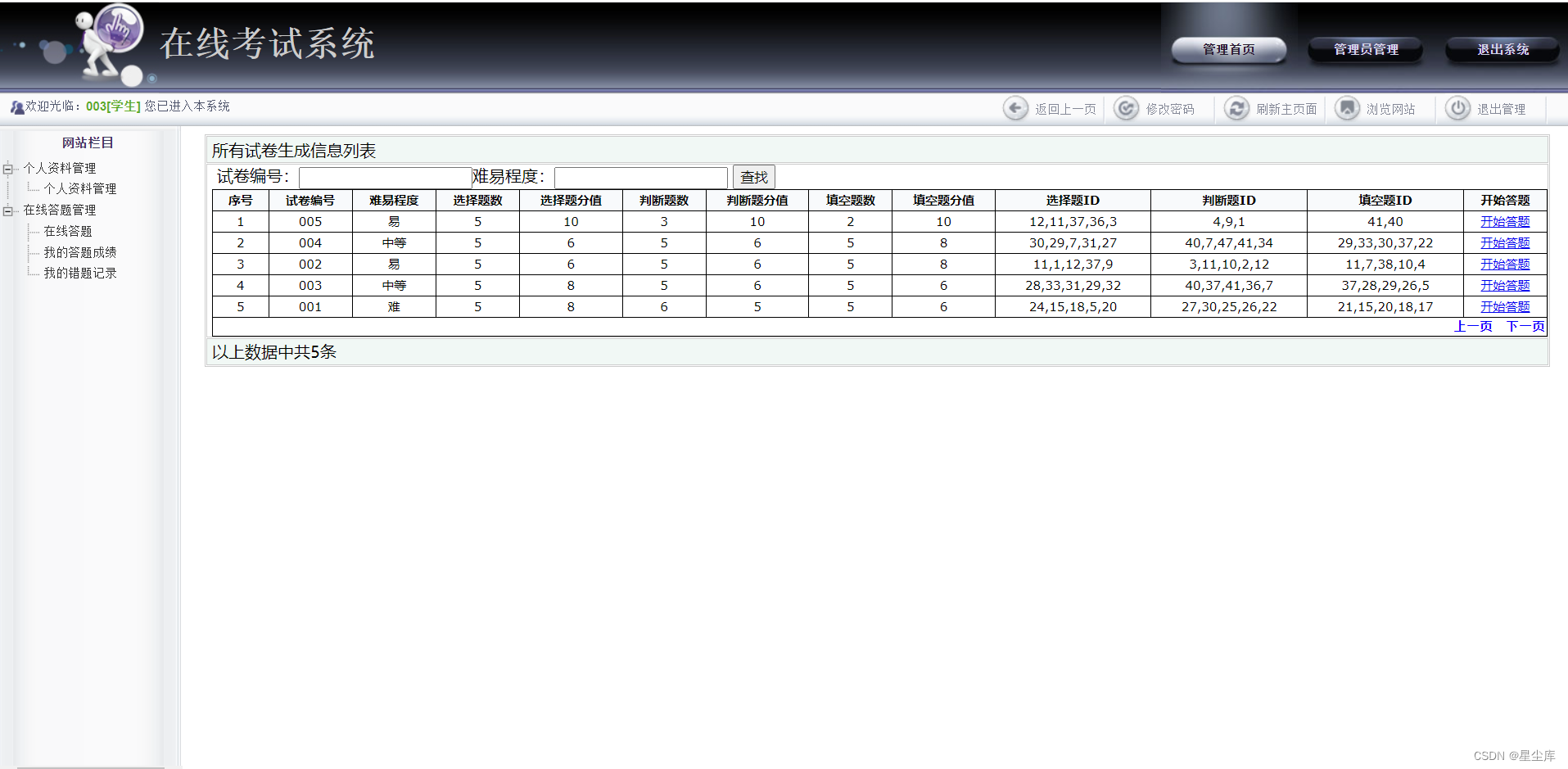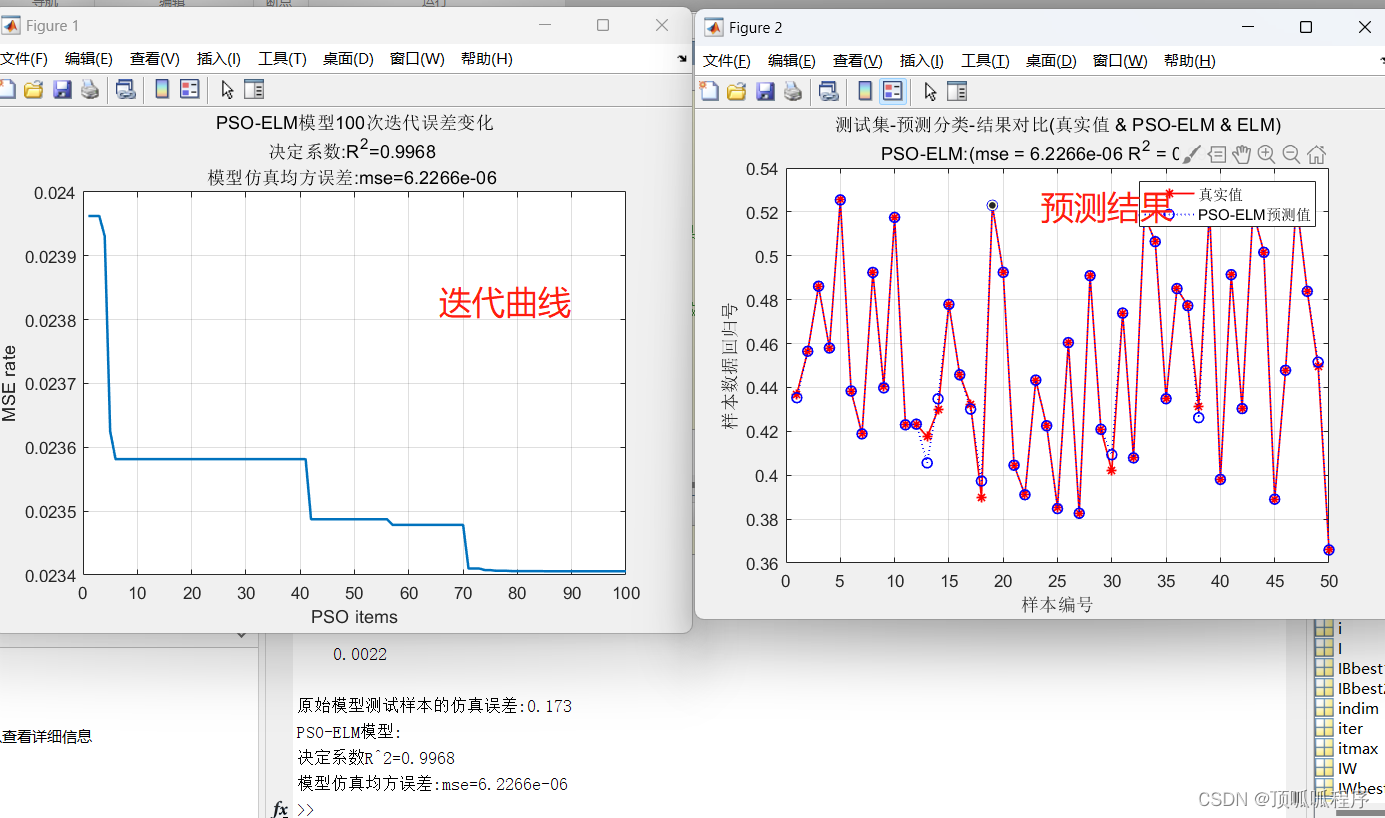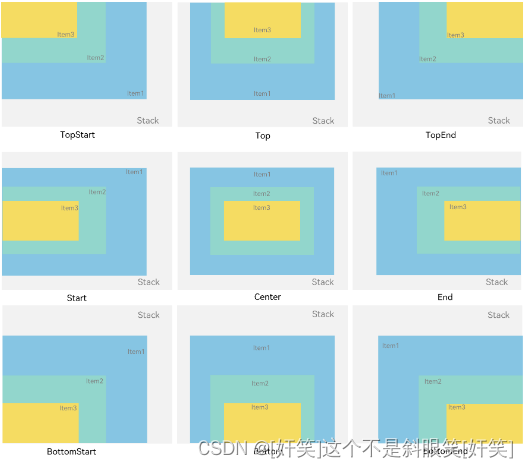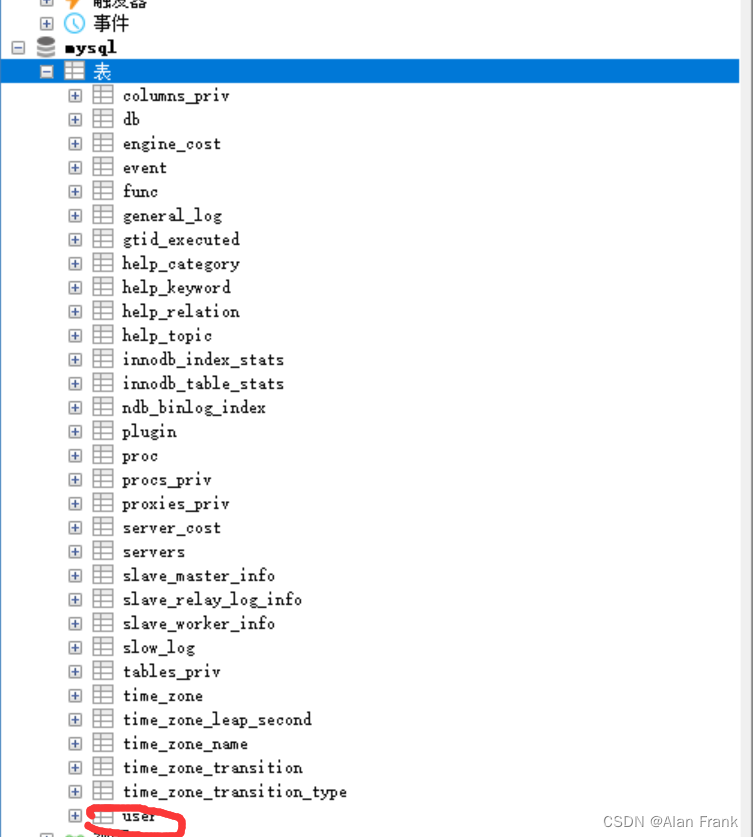文章目录
- 学习目标
- MAX()、MIN()、AVG()、SUM()、COUNT()
- COUNT(*) 得到所有记录条目
- DISTINCT去重
- 练习1(使用UNION , SUM, BETEEN AND)
- GROUP BY子句
- 练习2(使用sum,group by, join on, join using)
- HAVING子句分组筛选
- WITH ROLLUP运算符
学习目标
- 掌握常用的聚合函数:COUNT, MAX, MIN, SUM, AVG
- 掌握GROUP BY和HAVING子句的用法
- 掌握Where和HAVING的区别
- where用在group by之前,having用在group by之后
- 带GROUP BY的SQL怎么优化?
- 未查询到,日后补充
- COUNT(1), COUNT(*), COUNT(字段)那种效率是最好的?
- 结论:count(*) = count(1) > count(主键字段) > count(字段)
MAX()、MIN()、AVG()、SUM()、COUNT()
SELECT MAX(invoice_total) AS highest,
MIN(invoice_total) AS lowest,
AVG(invoice_total) AS average,
SUM(invoice_total) AS total,
COUNT(invoice_total) AS num
FROM invoices

COUNT(*) 得到所有记录条目
- 聚合函数只运行非空行,如果列中有空值,不会被算在函数内
- 如果想得到表格中的所有记录条目,使用COUNT(*)
- select count(name) from t_order,意思是统计t_order表中,name字段不为null的记录有多少个,如果某条记录的name字段为null,就不会被统计进去。
- select count(1) from t_order,意思是1这个表达式不为null的记录有多少个。1这个表达式就是单纯数字,它永远都不是null,所以这条语句,就是在统计t_order表中有多少个记录
-- 一个没有空行,一个有空行,结果不同
SELECT MAX(payment_date) AS latest,
COUNT(invoice_total) AS num,
COUNT(payment_date) AS count_of_payments
COUNT(*) AS total_records
FROM invoices

DISTINCT去重
SELECT MAX(invoice_total) AS highest,
MIN(invoice_total) AS lowest,
AVG(invoice_total) AS average,
SUM(invoice_total * 1.1) AS total,
-- client_id中有重复的,结果7
COUNT(client_id) AS num
-- 可用distinc去重,结果3
COUNT(DISTINCT client_id) AS num
FROM invoices
WHERE invoice_date > '2019-07-01';
练习1(使用UNION , SUM, BETEEN AND)
- 练习:汇总2019上半年、下半年以及整年的数据。
- 使用UNION , SUM, BETEEN AND
SELECT
'First half of 2019' AS date_range,
SUM(invoice_total) AS total_sales,
SUM(payment_total) AS total_payments,
SUM(invoice_total - payment_total) AS what_we_expect
FROM invoices
WHERE invoice_date BETWEEN '2019-01-01' AND '2019-06-30'
UNION
SELECT
'Second half of 2019' AS date_range,
SUM(invoice_total) AS total_sales,
SUM(payment_total) AS total_payments,
SUM(invoice_total - payment_total) AS what_we_expect
FROM invoices
WHERE invoice_date BETWEEN '2019-07-01' AND '2019-12-31'
UNION
SELECT
'Total' AS date_range,
SUM(invoice_total) AS total_sales,
SUM(payment_total) AS total_payments,
SUM(invoice_total - payment_total) AS what_we_expect
FROM invoices
WHERE invoice_date BETWEEN '2019-01-01' AND '2019-12-31'
运行结果:

GROUP BY子句
- 按列分组数据
- GROUP BY子句永远在from和where子句之后,在order by之前
- st的口诀:select, from, where, having, group by, order by
把sum按照client_id分组
还可以排序
还可以添加筛选条件
select
client_id,
sum(invoice_total) as total_sales
from invoices
where invoice_date >= '2019-07-01'
group by client_id
order by total_sales desc
- 多列分组数据
-- 多列分组
select
state,
city,
sum(invoice_total) as total_sales
-- 连接两个表
from invoices i
JOIN clients using (client_id)
-- 每个state和city的组合
group by state, city
练习2(使用sum,group by, join on, join using)
-- 按支付日期、支付方式分组计算payment_total的总值
select p.date,
pm.name,
sum(payment_total) as 'total_payments'
from invoices i
join payments p using (invoice_id)
join payment_methods pm on p.payment_method = pm.payment_method_id
group by p.date, payment_method
运行结果

HAVING子句分组筛选
- 使用场景
-- 按clientid把totalsales分组后,想获得total大于500的客户。怎么办呢?
-- 此时不能在from后面用where totalsales> 500,因为此时total_sales的结果还没有
select client_id,
sum(invoice_total) as total_sales
from invoices
group by client_id
- 用HAVING子句,在分组之后筛选数据
select client_id,
sum(invoice_total) as total_sales
from invoices
group by client_id
-- 在group by后用having,此时把大于500的筛选出来了
having total_sales > 500
运行结果

- having子句的复合搜索,用and写一个复合搜索条件
select client_id,
sum(invoice_total) as total_sales,
count(*) as number_of_invoices
from invoices
group by client_id
-- 想筛选total_sales大于500且发票数量大于5的,用and连接
having total_sales > 500 and number_of_invoices > 5
运行结果

-
having子句中筛选的列,一定是在select中出现的。而where则没有这样的限制。
-
练习
找到位于VA的,消费总额大于100的顾客
use sql_store;
select customer_id,
sum(unit_price * quantity) as total_price
from customers c
join orders o using (customer_id)
join order_items using (order_id)
where state = 'VA'
group by customer_id
having total_ price > 100
WITH ROLLUP运算符
- 对group by的结果再进行汇总
select client_id,
sum(invoice_total) as total_sales
from invoices
group by client_id with rollup
运行结果
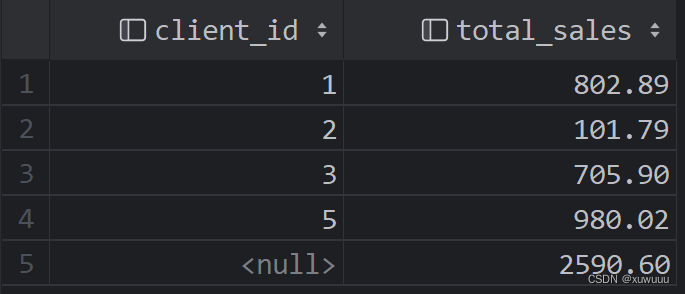
- 多列分组用rollup时,会得到每个组和整个结果集的汇总值
select state,
city,
sum(invoice_total) as total_sales
from invoices i
join clients c using (client_id)
group by state, city with rollup
运行结果

- 练习
按照支付方式分组,获取每种支付方式支付的总额,并进行结果汇总。
use sql_invoicing;
select pm.name,
sum(amount) as total
from payments p
join payment_methods pm
on payment_method_id = payment_method
group by name with rollup
查询结果
